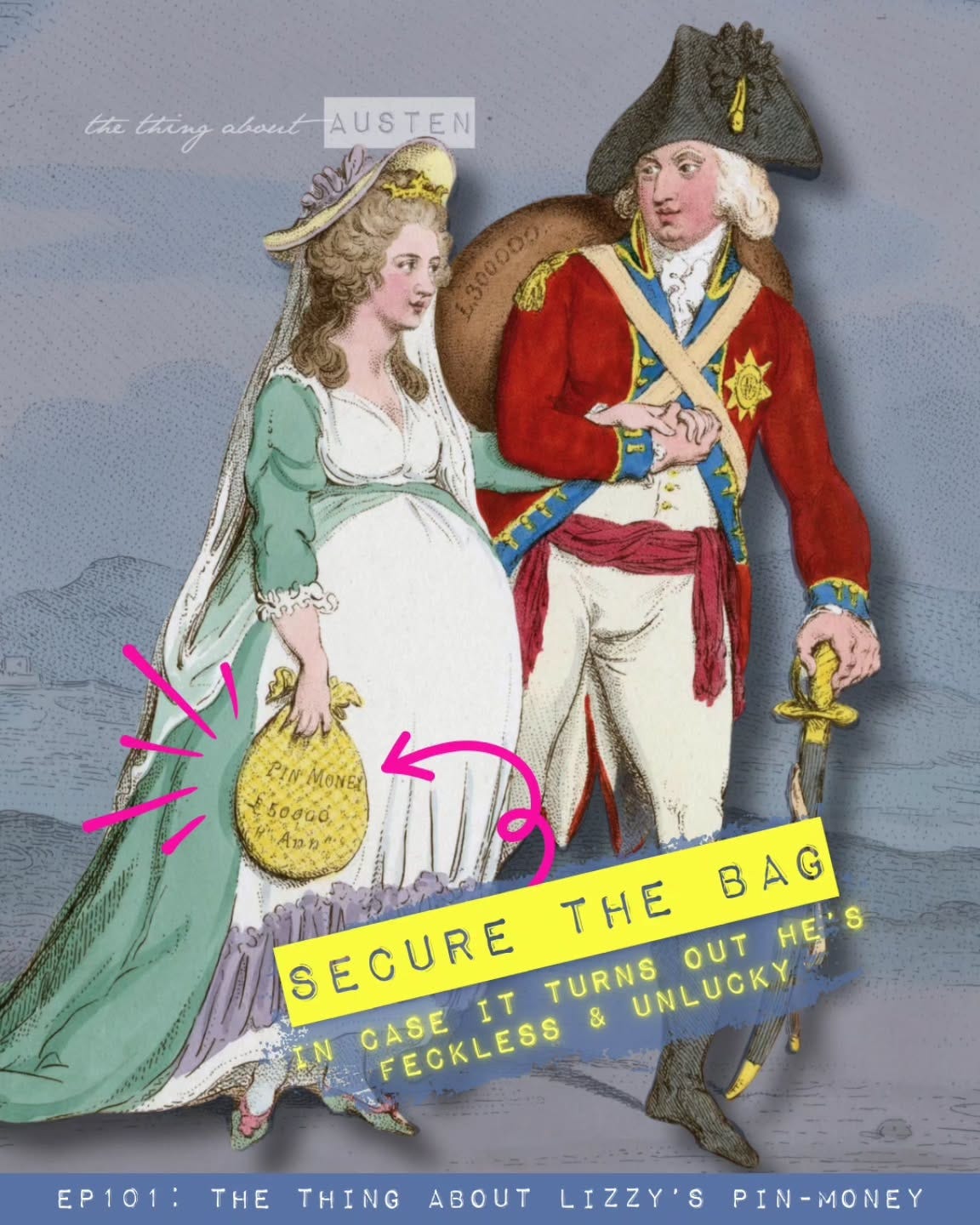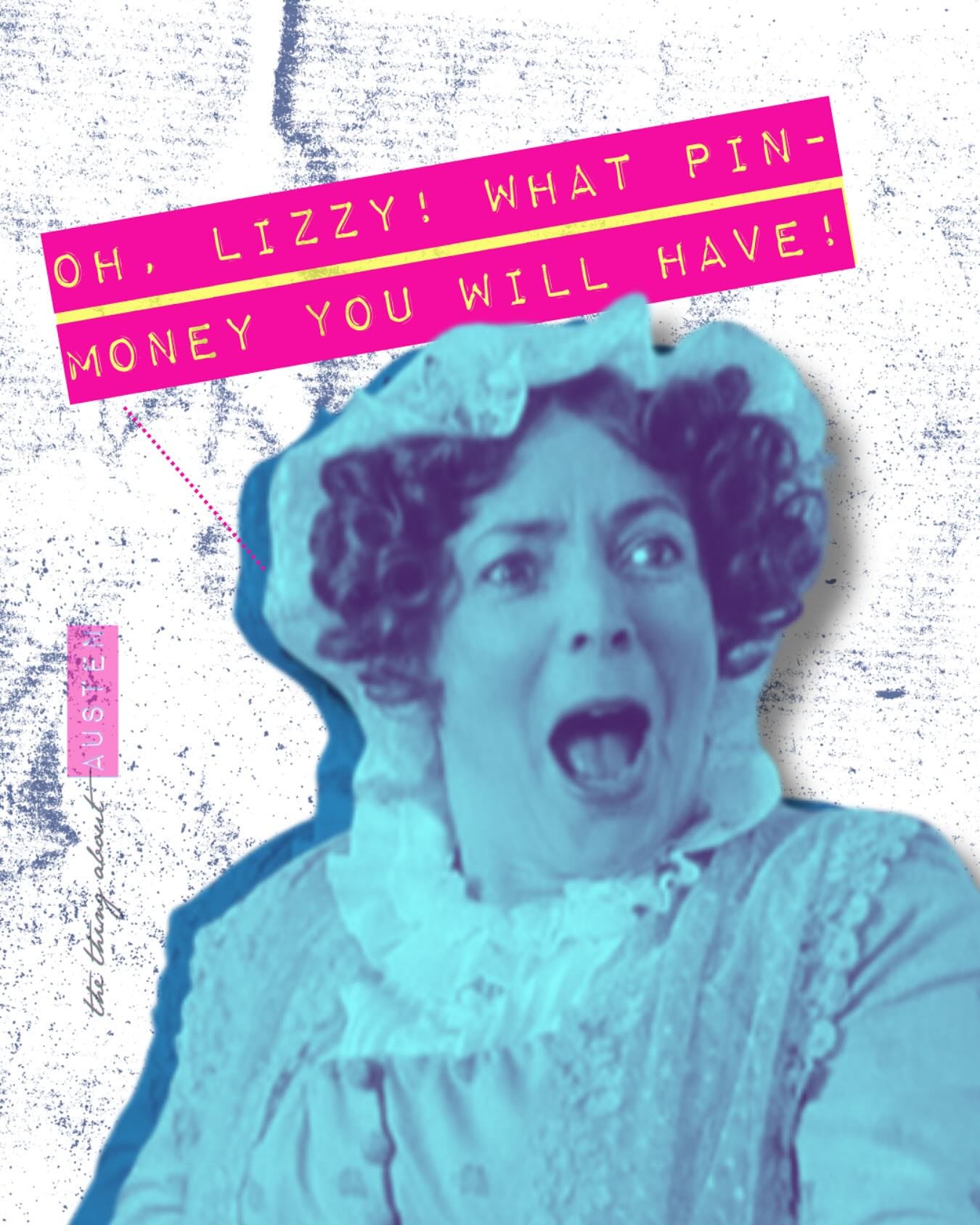Episode 101: The Thing About Lizzy's Pin-Money
Lizzy is officially engaged, and Mrs. Bennet has pound signs for eyes. Grab your marriage settlement and your preferred negotiator, because this episode we're getting into the history and purpose of pin-money.

Selected Sources:
Addison, Joseph, and Richard Hurd. The Spectator. T. Cadell and W. Davies, 1811.
Clancy (Barrister-at-law), James. An Essay on the Equitable Rights of Married Women, with Respect to Their Separate Property, and Also to Their Claim to a Provision, Called the Wife’s Equity. To Which Is Added, the Law of Pin-Money, Separate Maintenance, and of the Other Separate Provisions of Married Women. 2nd Ed. R. Milliken; London: Charles Hunter, 1819.
Dent, Susie, ed. “Brewer’s Dictionary of Phrase & Fable.” In Oxford Reference. Oxford: Oxford University Press. Accessed January 3, 2025. https://www-oxfordreference-com.uvu.idm.oclc.org/display/10.1093/acref/9780199990009.001.0001/acref-9780199990009.
Longman, Eleanor D., and Sophy Loch. Pins and Pincushions. Longmans, Green and Company, 1911.
Muir, Rory. Love and Marriage in the Age of Jane Austen. New Haven: Yale University Press, 2024.
Pool, Daniel. What Jane Austen Ate and Charles Dickens Knew: From Fox Hunting to Whist; the Facts of Daily Life in Nineteenth-Century England. New York: Touchstone, 2007.
Staves, Susan. “Pin Money.” Studies in Eighteenth-Century Culture 14, no. 1 (1985): 47–77. https://doi.org/10.1353/sec.1985.0003.




This happened at Walmart today. I was sharing an aisle with a mother and her young daughter. Suddenly, the girl speeds up and passes me:
Exasperated mother: Where are you going?!
Girl (not stopping): I have pin money!